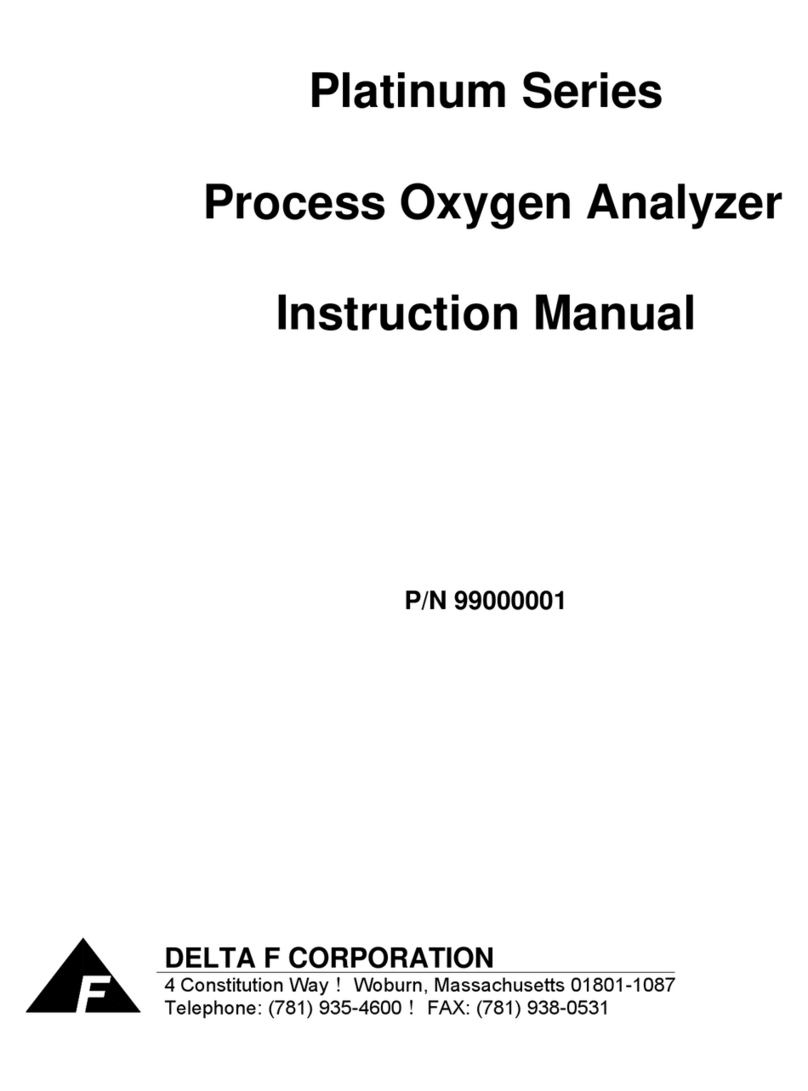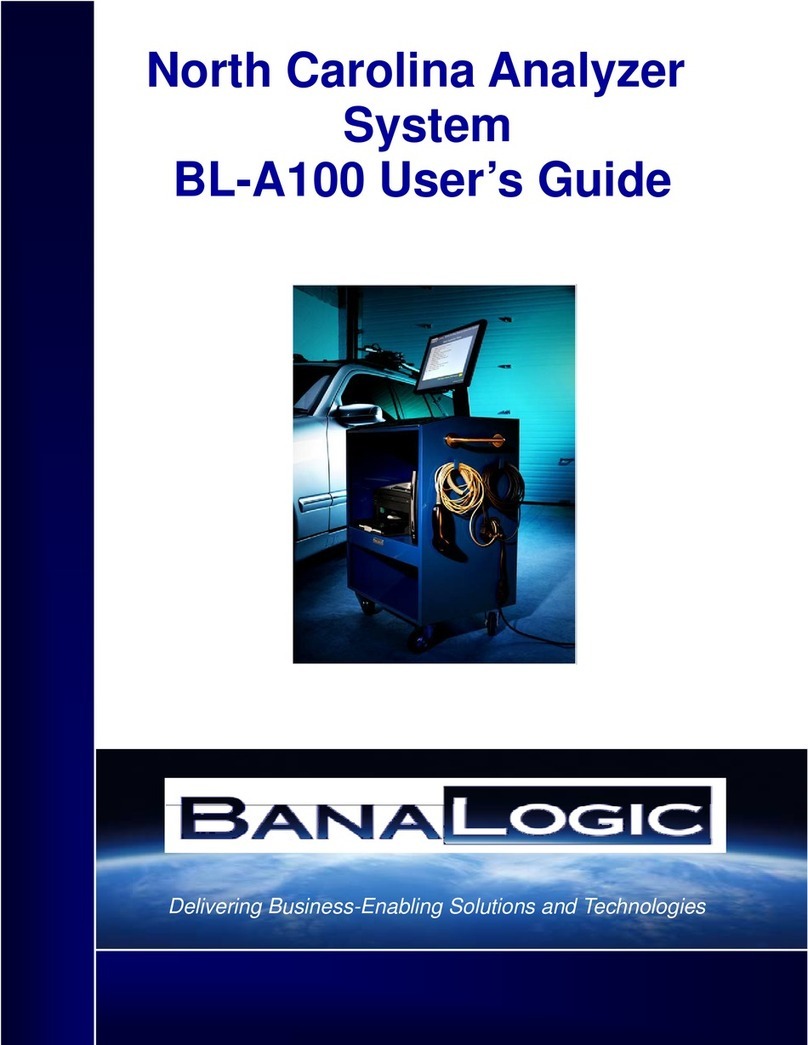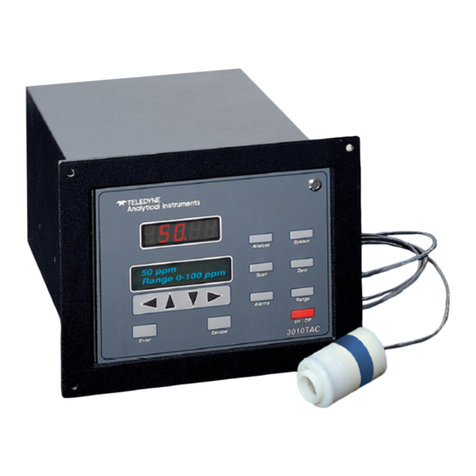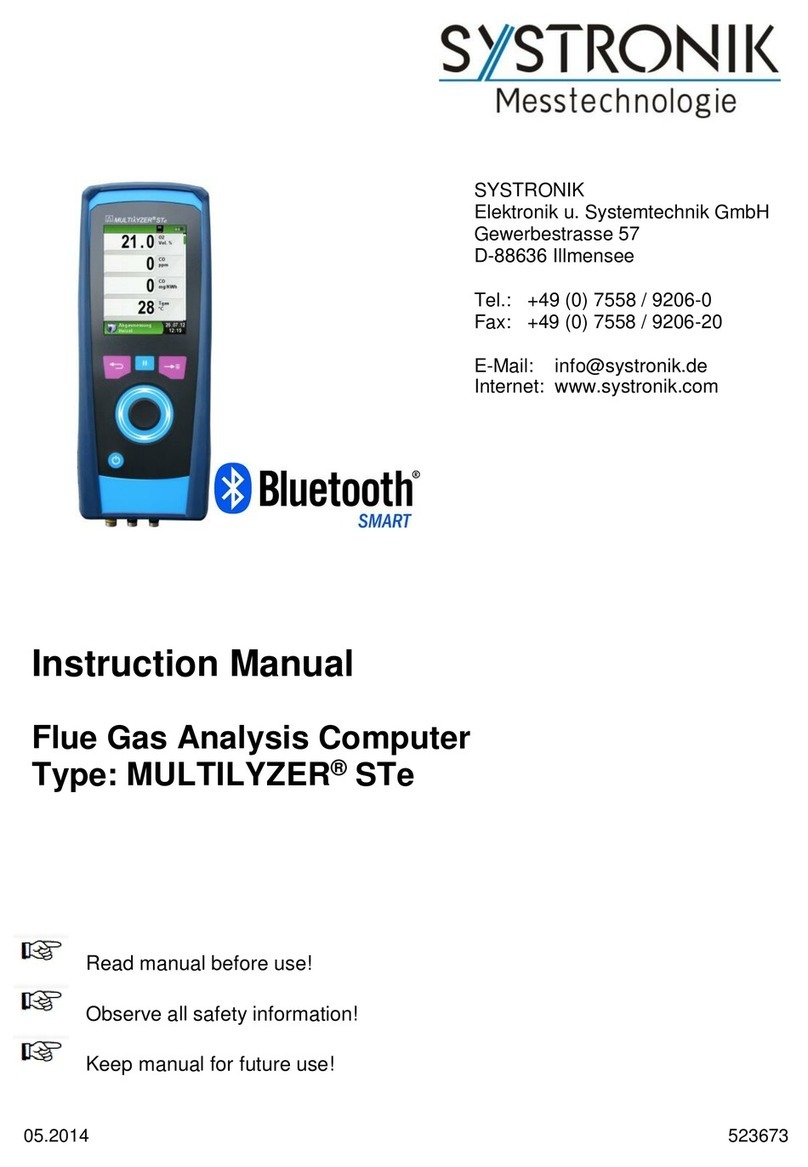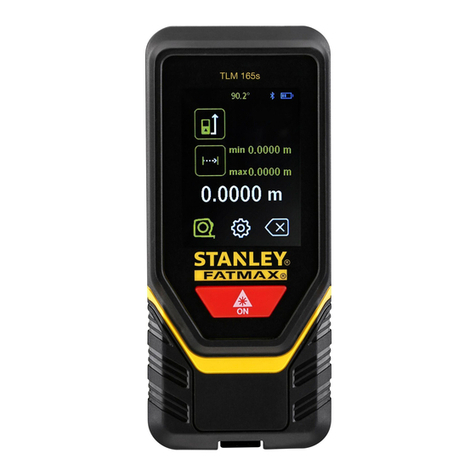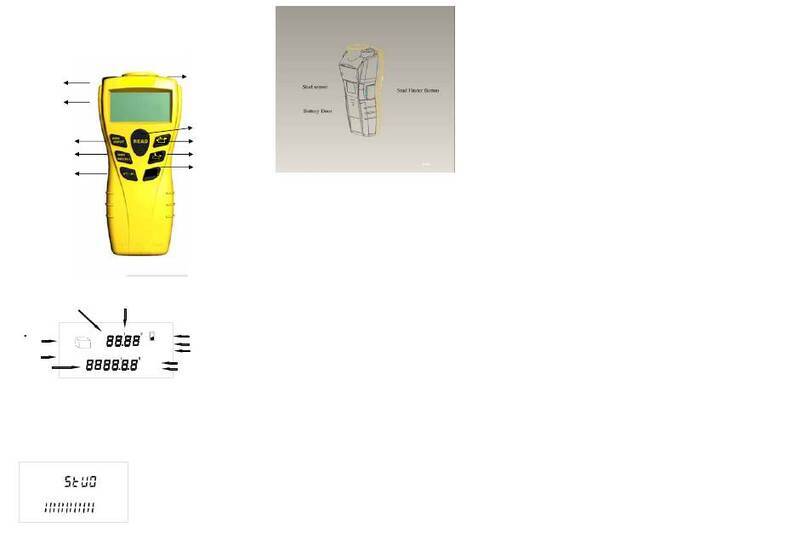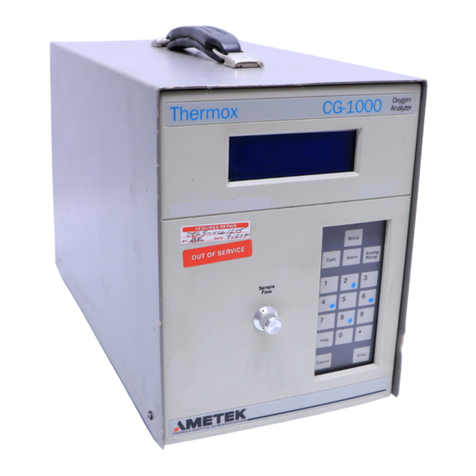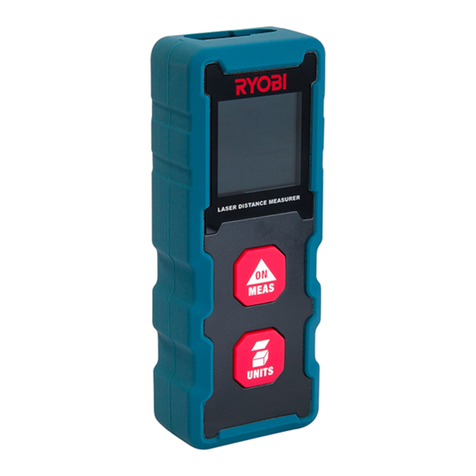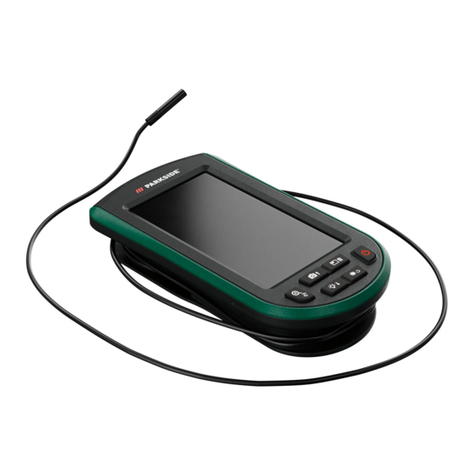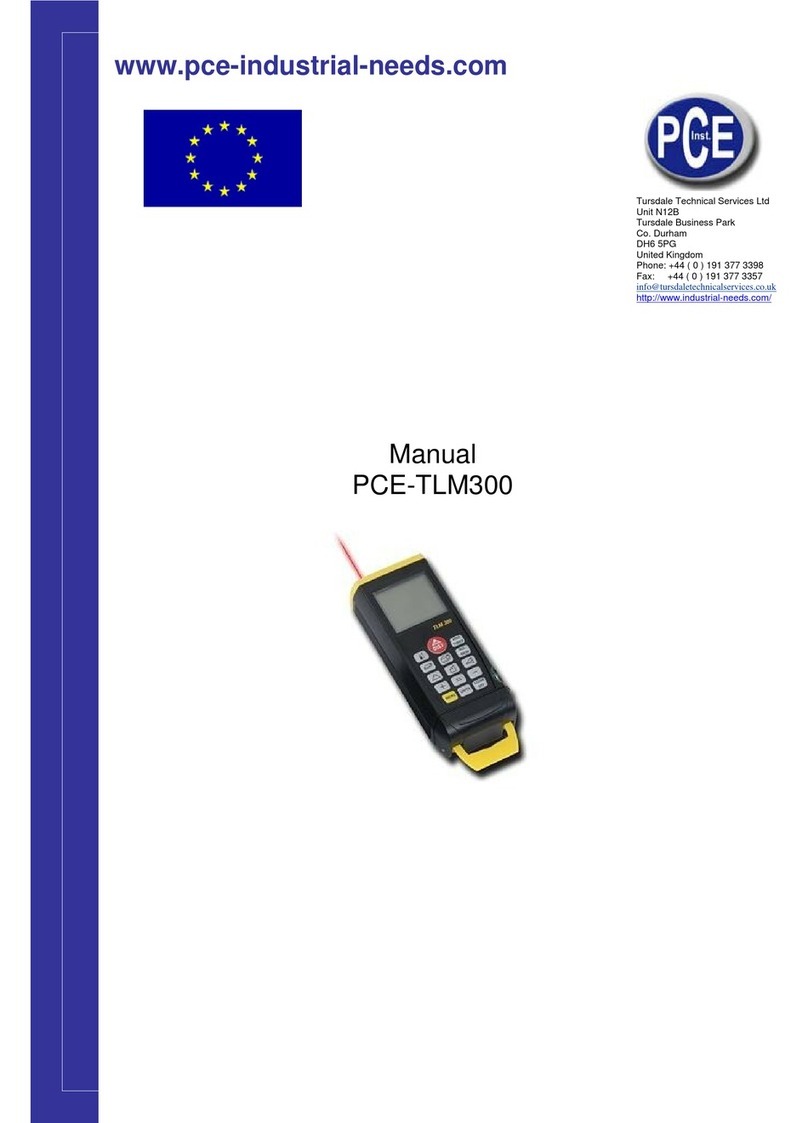Delta F DF Series User manual

DF Series
Oxygen Analyzer
OEM Version
Model DF-110E
Instruction Manual
F
Delta F Corporation
4 Constitution Way
Woburn, Massachusetts 01801-1087
Telephone: (781) 935-4600
FAX: (781) 938-0531
99000025
Rev C
031611

Copyright 2010 by Delta F Corporation
No part of this publication may be reproduced, stored in a retrieval system or transmitted in
any form, or by any means including electronic, mechanical, photocopying, recording or
otherwise without prior written permission of Delta F Corporation.
Stab-Eland Bi-Strataare trademarks of Delta F Corporation.
The Delta F Difference
Your Analyzer has been designed, manufactured and will be supported under
ISO-9001 controls, thus helping to insure the highest possible standards of
quality.
Every analyzer that Delta F manufactures is tested and operated on a variety of
gas concentrations to insure that it functions properly when you receive it.
The certificate of calibration assures your analyzer has been calibrated on
gases that are traceable to NIST standards. With proper maintenance, your
analyzer should remain calibrated for years.
For a fast and successful start-up, please read this manual carefully. There are
important cautions and a number of helpful hints that will help you to
optimize the operation of your analyzer.
If you have questions please do not hesitate to call the Delta F Service Line at

Table of Contents DF-110E i
1 Table of Contents
1Table of Contents ..................................................................... i
2Table of Figures ...................................................................... iv
3CAUTIONS ................................................................................ 5
3.1 Explanation of Graphic Symbols................................................................................. 5
3.2 Important Warnings .................................................................................................... 6
4Specifications .......................................................................... 7
4.1 Range .......................................................................................................................... 7
4.2 Response Time............................................................................................................ 7
4.3 Accuracy ..................................................................................................................... 7
4.4 Sample Gas Compatibility........................................................................................... 7
4.5 Sample Requirements.................................................................................................. 8
4.6 Ambient Temperature Requirements........................................................................... 8
4.7 Miscellaneous.............................................................................................................. 8
5Analyzer Start-Up Procedure .................................................. 9
5.1 Charging the Sensor .................................................................................................... 9
5.2 Powering up the Analyzer ......................................................................................... 11
5.3 Additional Capabilities.............................................................................................. 12
6Standard Features ................................................................. 13
6.1 Stable Calibration...................................................................................................... 13
6.2 Electrolyte Condition Indicator ................................................................................. 13
6.3 Analog Output........................................................................................................... 14
7Options ................................................................................... 15
7.1 Stab-El................................................................................................................... 15
7.2 Alarms....................................................................................................................... 16
7.2.1 Adjusting Oxygen Alarm Set Points ............................................................ 16
7.2.2 Alarm Relays ............................................................................................... 18
7.3 Pressure Regulators................................................................................................... 18
7.4 Filter.......................................................................................................................... 18
7.5 Low Flow Indication ................................................................................................. 18
7.6 Flow Control Valve................................................................................................... 19
7.7 Pump ......................................................................................................................... 19
7.7.1 Pump Control............................................................................................... 19
7.8 Analog Output........................................................................................................... 19
7.9 Isolated 4 to 20 mA Output ....................................................................................... 20
7.10 Gas Scale Correction Factor .................................................................................... 20
7.10.1 Adjusting the Gas Scale Factor Pot for Light Gases (He or H2) .............. 21
7.10.2 Adjusting the Gas Scale Factor Pot for Gases Heavier Than Nitrogen.... 22
8Sample Gas and Plumbing Cautions ................................... 25
8.1 Condensation............................................................................................................. 25
8.2 Temperature .............................................................................................................. 25
8.3 Leaks......................................................................................................................... 25
8.4 Process Up-sets (Oxygen Shock) .............................................................................. 26

ii DF-110E Table of Contents
9Outputs and Remote Connections........................................27
9.1 The I/O Connector .....................................................................................................27
9.1.1 Alarm 1 and 2 (NC-C-NO) ...........................................................................27
9.1.2 4 to 20 mA Isolated Output (4-20+, 4-20-)...................................................27
9.1.3 Analog Output (Rec + & Rec - )) .................................................................28
9.1.4 Remote Range Indicator (Range Com - Range 1, 2, 3) ................................28
9.1.5 Sensor Off (Sensor Off Com, Sensor Off)....................................................28
9.1.6 DC Common (DC Com)...............................................................................28
9.1.7 Ground ( )...................................................................................................29
9.1.8 Trouble Alarm ..............................................................................................29
9.2 The Remote Sensor Connector...................................................................................29
9.2.1 Remote Sensor (Sensor +, Sensor -) .............................................................29
9.2.2 Secondary Electrodes (Sec El +, Sec El -)....................................................30
9.2.3 Display Outputs (Display +, Display -) ........................................................30
9.3 Pump Control.............................................................................................................30
9.3.1 Analyzer Control of an External Pump.........................................................30
9.3.2 Remote Control of an External Pump...........................................................31
10 Maintenance and Calibration Checks...................................33
10.1 Sensor Maintenance..................................................................................................33
10.1.1 Adding Replenishment Solution...............................................................33
10.2 Calibration................................................................................................................34
10.2.1 Adjusting Calibration ...............................................................................34
10.2.2 Adjusting the Span Calibration Pot (with the GSF Option installed) .......36
11 Theory of Operation ...............................................................37
12 Troubleshooting .....................................................................39
12.1 Troubleshooting Guide.............................................................................................39
12.1.1 Problem Observations ..............................................................................39
12.1.2 Remedy Keys............................................................................................40
12.2 Troubleshooting Considerations...............................................................................41
12.2.1 Gas Pressure Effects .................................................................................41
12.2.2 Positive Pressure Operation......................................................................41
12.2.3 Negative Pressure Operation ....................................................................41
12.2.4 Temperature Effects on Sensor Performance ...........................................41
12.2.5 Replaceable Parts .....................................................................................43
12.2.6 Fuse Replacement.....................................................................................44
13 Shipping the Analyzer............................................................45
13.1 Draining the Sensor ..................................................................................................45
14 Safety and Operating Notices ...............................................47
14.1 Safety Notices...........................................................................................................47
14.2 Operating Notices.....................................................................................................47
14.3 General Warnings.....................................................................................................48
14.4 MATERIAL SAFETY DATA SHEET - Electrolyte ...............................................49
14.5 MATERIAL SAFETY DATA SHEET –Replenishment Solution ..........................55
14.6 Seguridad..................................................................................................................58
14.7 Avisos Generales......................................................................................................59
14.8 Sicherheitshinweis....................................................................................................60
14.9 Allgemeine Warnhinweise........................................................................................61
14.10 Mesures de sécurité ..............................................................................................62
14.11 Precautions à prendre en general..........................................................................63
14.12 Misure di sicurezza...............................................................................................64
14.13 Precauzioni da prendere in generale:....................................................................65

Table of Contents DF-110E iii
15 Warranty ................................................................................. 67
16 Index ....................................................................................... 69

iv DF-110E Table of Figures
2 Table of Figures
Figure 1: Delta F Oxygen Sensor...................................................................... 9
Figure 2: Sensor Off Switch............................................................................ 11
Figure 3: Power Switch................................................................................... 11
Figure 4: Electrolyte Condition Indicator ....................................................... 13
Figure 5: Setting alarms .................................................................................. 16
Figure 6: Gas Correction Factor Adjustment.................................................. 22
Figure 7: I/O Connector Pin-out ..................................................................... 27
Figure 8: Remote Sensor Connector Pin-out .................................................. 29
Figure 9: Calibration Controls ........................................................................ 35
Figure 10: Span Adjust with GSF installed .................................................... 36
Figure 11: Sensor Layout ................................................................................ 37

CAUTIONS DF-110E 5
3 CAUTIONS
There are a number of warnings and cautions that must be observed to avoid
damage to the analyzer as well as insuring the safety of its users. The analyzer
must be operated in a manner specified in this manual. Delta F cannot be
responsible for direct or consequential damages that result from installing
and/or operating the analyzer in a manner not described in this manual.
Importantly, the analyzer has been designed for use with inert, non-toxic, non-
combustible sample gasses only. Delta F cannot be responsible for direct or
consequential damages that result from using the analyzer with these gases.
3.1 Explanation of Graphic Symbols
Following is a list of the various symbols used throughout this manual and
their definitions.
CAUTION
This symbol alerts the user to the presence of physically
hazardous conditions that may be dangerous to individuals or
equipment.
NOTE
This symbol alerts the user to the presence of important
operations and/or maintenance information.
This symbol alerts the user to the presence of caustic liquid.
Refer to the MSDS at the back of the manual for handling
instructions.

6DF-110E CAUTIONS
3.2 Important Warnings
DANGER
Potentially hazardous AC voltages are present within this instrument.
Leave all servicing to qualified personnel. Disconnect the AC power
source when installing or removing: external connections, the sensor,
the electronics, or when charging or draining electrolyte.
CAUTION
Do not operate this Oxygen Analyzer without a complete
understanding of the instructions in this manual. Do not connect this
Analyzer to a power source until all signal and plumbing
connections are made.
CAUTION
This analyzer must be operated in a manner consistent with its
intended use and as specified in this manual.

Specifications DF-110E 7
4 Specifications
4.1 Range
DF-110 Single Range Analyzer
Range (ppm)
DF-110
Model #
Range (%)
DF-110
Model #
0 to 5,000 ppm
111-5000
0 to 25%
111-P25
0 to 1,000 ppm
111-1000
0 to 10%
111-P10
0 to 500 ppm
111-500
0 to 5%
111-P5
0 to 100 ppm
111-100
0 to 1%
111-P1
0 to 50 ppm
111-50
0 to 10 ppm
111-10
DF-110 Three Range Analyzer
Ranges (ppm)
DF-110
Model #
Ranges (%)
DF-110
Model #
0 to100/1,000/10,000 ppm
113-10000
0 to 0.25/2.5/25%
113-P25
0 to 50/500/5,000 ppm
113-5000
0 to 0.1/1/10%
113-P10
0 to 10/100/1,000 ppm
113-1000
0 to 0.05/0.5/5%
113-P5
0 to 5/50/500 ppm
113-500
0 to 1/10/100 ppm
113-100
4.2 Response Time
Responds instantaneously to O2change. Equilibrium time depends on specific
conditions. Typically less than 10 seconds to read 90% of a step change.
4.3 Accuracy
At constant conditions, the greater of +/- 3% or 0.5% of measurement range,
but not lower than 0.05% of full analyzer range for three range analyzers.
4.4 Sample Gas Compatibility
Standard Sensor
All inert and passive gases including N2, H2, CO, freons, light hydrocarbons,
etc.

8DF-110E Specifications
Sensor with Stab-El
Neutralizes contaminants including acids such as CO2, H2S, Cl2, NOX, SOX,
etc. (See page 15 for concentration limits).
4.5 Sample Requirements
Gas phase, non-condensing, sample temperature: -17 to 45°C (0 to 113°F).
Flow rate 1.0 to 2.0 scfh at 0.2 to 1.0 psig pressure.
4.6 Ambient Temperature Requirements
Room/cabinet temperature: 0 to 45°C (32 to 113°F)
4.7 Miscellaneous
Store and operate between 0°C and 45°C (32°F and 113°F).
100-120/200-240 VAC, 50-60 Hz, 1.0/0.5 A maximum
Nominal power consumption 20 Watts

Analyzer Start-Up Procedure DF-110E 9
5 Analyzer Start-Up Procedure
Your OEM analyzer has been thoroughly tested and calibrated, however, it is
necessary to “charge” the sensor with electrolyte prior to turning the analyzer
on.
CAUTION
To avoid damage to your analyzer:
Do not operate without electrolyte in the sensor
Do not use more than one bottle of
E
-Lectrolyte Blue
Do not operate without gas flow
Do not operate a trace level analyzer for more than a few
minutes while exposed to air.
Do not exceed the gas pressure and flow limits
The electrolyte is a caustic solution. Review the Material
Safety Data Sheet (MSDS) on page 49 before handling the
electrolyte solution.
5.1 Charging the Sensor
Locate the Oxygen Sensor
1. Un-screw the lid from the sensor.
Figure 1: Delta F Oxygen Sensor

10 DF-110E Analyzer Start-Up Procedure
Add Electrolyte
1. Add the entire contents of one bottle of Delta F type E-Lectrolyte Blue to
the sensor.
2. Add enough Delta F Replenishment Solution to raise the level to the
“max” line, if needed.
3. Replace the sensor lid.
4. Allow the sensor to sit for 60 minutes before starting gas flow.
CAUTION
To insure proper operation, when adding the electrolyte for
the first time, or when changing the electrolyte, allow the
sensor to sit for 60 minutes before starting gas flow.
Adjust the sample gas flow rate
1. In positive pressure applications slowly adjust the flow rate as indicated on
the flowmeter to 2.0 scfh using an upstream flow control valve or pressure
regulator.
2. If a background gas other than nitrogen is being used, the “indicated” flow
rate must be set as shown in Table 1.
Background Gas
Flowmeter Setting (scfh)
Argon
1.2
Ethylene
1.0
Nitrogen or Air
1.0
Carbon Monoxide
1.0
Methane
0.8
Hydrogen
0.3
Helium
0.4
Table 1: Flowmeter Settings versus Background Gas

Analyzer Start-Up Procedure DF-110E 11
5.2 Powering up the Analyzer
1. Verify the analyzer is set to the desired 110 VAC or 220 VAC selection by
checking the voltage indication sticker.
2. For concentrations below 100 ppm, it is useful to let the analyzer “purge”
by letting gas flow through it for about five minutes before the power and
sensor are turned on.
3. A three range analyzer should be set to the highest range.
4. Be sure the Sensor Off switch is not depressed (OFF). See Figure 2
Figure 2: Sensor Off Switch
5. Turn the analyzer on using the power switch. See Figure 3.
Figure 3: Power Switch
6. Allow several minutes for the analyzer to come “on range”
7. Progressively switch to a lower range as the reading allows.

12 DF-110E Analyzer Start-Up Procedure
5.3 Additional Capabilities
Your analyzer may be equipped with additional capabilities. Consult the
Standard Features section on page 13 and the Options section on page 15 for
information regarding:
Analog Output Scaling for 0 to 1.0, 2.0 or 5.0 VDC
4 to 20 mA Output
Stab-ElAcid Gas System
Pressure Regulators and Flow Control Valves
Gas Flow Switch
Sample Pump
Quick Start
Also, see the Outputs and Remote Connections section on page 27 for
information regarding:
Remote Sensor Operation
Remote Pump Operation
Remote Control of On-board Pump

Standard Features DF-110E 13
6 Standard Features
The DF Series analyzers use a patented, non-depleting, coulometric sensor to
detect oxygen in gas sample streams.
The DF analyzer is generally tolerant of contaminants, as well as pressure and
temperature fluctuations. However, the sample gas must be relatively clean,
dry, and free of hostile components.
Your analyzer has been custom built to order and calibrated to operate across a
specific range of oxygen concentrations using calibration gas traceable to
NIST.
6.1 Stable Calibration
The analyzer will remain calibrated as long as the sensor and its electrolyte are
properly maintained. Refer to the Maintenance and Calibration Checks section
on page 33 for additional information.
6.2 Electrolyte Condition Indicator
This indicator will light if the electrolyte level falls too low or, in some cases,
becomes contaminated. If the electrolyte is low, simply add Delta F type
Replenishment Solution to the sensor. Do not add more electrolyte after the
initial bottle is put in!
Figure 4: Electrolyte Condition Indicator

14 DF-110E Standard Features
6.3 Analog Output
The default setting for the analog signal output is 0 to 10 VDC. Alternate
settings available when ordering are 0 to 1 VDC, 0 to 2 VDC or 0 to 5 VDC.
The analog output is proportional to the oxygen reading of the analyzer. The
analog output on a three range analyzer will be scaled to the “selected” range.

Options DF-110E 15
7 Options
7.1 Stab-El
The Stab-Eloption can prevent trace levels of acid in the gas from
compromising the sensor. The maximum allowable levels of acid component
in the sample stream are the following:
Measuring Range
CO2*
SO2
H2S
NOX
Cl2
HCl
0-50 ppm
0.1
100
100
100
50
50
0-100 ppm
0.1
100
100
100
50
50
0-500 ppm
0.1
100
100
100
50
50
0-1000 ppm
0.2
250
250
250
100
100
0-5000 ppm
0.3
500
500
500
200
200
0-10,000 ppm
0.4
750
750
750
400
400
0-5%
1.0
1300
1300
1300
700
700
0-10%
2.0
2000
2000
2000
1000
1000
0-25%
3.0
3000
3000
3000
1500
1500
*Concentrations of CO2are in percent. One percent is equivalent to 10,000 ppm.
Table 2: Maximum Acid Gas Concentrations with Stab-El(in ppm)
Contact Delta F for recommendations on using the Stab-Elsensor on acid
gases other than those listed above.
If the acid gas components in your gas exceed the limits in Table 2 several
approaches can be taken:
An acid scrubber can be placed up stream of the analyzer to remove the
bulk of the acids, and the Stab-Eloption will allow the analyzer to cope
with the remaining trace levels.
The analyzer duty cycle can be adjusted to limit its exposure to acids and
to allow the Stab-Eloption to “keep up”.
A dilution system can be added to limit acid concentration.
Consult Delta F for further recommendations.

16 DF-110E Options
7.2 Alarms
The DF-110 can be equipped with one or two alarms. Alarm 1 can be factory
configured for high O2, low O2,, and Trouble. Alarm 2 can be configured for
high O2or low O2.
In the standard oxygen alarm configuration:
Alarm 1 activates when oxygen exceeds the set point.
Alarm 2 activates when oxygen falls below the set point.
Figure 5: Setting alarms
7.2.1 Adjusting Oxygen Alarm Set Points
1. Push the toggle switch, located between the alarm set point adjustments, in
the appropriate direction.
2. Adjust the alarm knob while viewing the alarm value on the display. See
note below for analyzers with no local display.
3. Release the toggle switch to resume normal operation.
NOTE FOR ANALYZERS WITH NO LOCAL DISPLAY
On OEM analyzers that are not equipped with a local display, the meter signal
is connected to the Display + and Display - pins on the Remote Sensor
Connector. This output is high impedance and must be measured with a meter
having an input impedance of 10 Meg or greater.
If the analyzer is equipped with one or more optional Oxygen Alarms the
signal at Display + and Display - will correspond to the Alarm Set Point when
the Alarm View switch is set to the Alarm 1 or Alarm 2 position. The voltage
read is the alarm set point scaled exactly the same way as in the oxygen
measurement mode, as seen in Table 3.

Options DF-110E 17
(Example: See the entry for the three range 0-100.0/1000.0/10000 PPM
analyzer. If the analyzer is set to the 0-100.0 PPM range the alarm set point at
Display + and Display - will be 0-100.0 PPM scaled over 0 to 1.000 VDC. So
if the voltage happened to be 0.100 VDC then the set point would be 10.0
PPM. If the analyzer were operating on the 0-1000.0 range the alarm set point
at Display + and Display - will be 0-1000.0 PPM scaled over 0 to 1.000 VDC.
So if the voltage happened to be 0.100 VDC then the set point would be 10.0
PPM.)
Analyzer Range
Voltage At Pins Display + &
Display -
SINGLE RANGE TRACE ANALYZERS
0-5000 PPM
0-0.500 V
0-1000 PPM
0-1.000 V
0-500 PPM
0-0.500 V
0-100.0 PPM
0-1.000 V
0-50.0 PPM
0-0.500 V
0-10.00 PPM
0-1.000 V
SINGLE RANGE PERCENT ANALYZERS
0-25.0%
0-0.250 V
0-10.00%
0-1.000 V
0-5.00%
0-0.500 V
0-1.00%
0-0.100 V
TRIPLE RANGE TRACE ANALYZERS
0-100.0/1000.0/10000 PPM
0-1.000 V
0-50.00/500.0/5000 PPM
0-0.500 V
0-10.00/100.0/1000 PPM
0-1.000 V
0-5.00/50.0/500 PPM
0-0.500 V
0-1.00/10.0/100 PPM
0-0.100 V
TRIPLE RANGE PERCENT ANALYZERS
0-.250/2.50/25.0%
0-0.250 V
0-0.100/1.00/10.0%
0-0.100 V
0-.050/.50/5.0%
0-0.050 V
Table 3: Meter Output Voltages

18 DF-110E Options
NOTE
Alarm triggers are inhibited while adjusting the set points.
The analyzer will continue to operate normally while alarms
are adjusted.
7.2.2 Alarm Relays
In the “No Alarm” condition the NC contact is connected to the Ccontact.
In the “Alarm” condition the NO contact is connected to the Ccontact.
The alarm relays are configured for “Fail Safe” operation. The relays will go
to an Alarm Condition when the analyzer is turned off or when power fails.
Each alarm has a SPST relay rated at 125/250 VAC at 5 amps and 30 VDC at
5 amps.
7.3 Pressure Regulators
The Standard Regulator is rated for 3000 psig inlet pressure.
The Absolute Regulator is rated to 1000 psig inlet pressure.
7.4 Filter
The Gas Sample Particle Filter is mounted upstream of the sensor. The
following filter elements can be purchased from Delta F.
Filter
Part Number
Fine grade (BQ) (< 1 micron)
64005012
Standard grade (DQ) (> 1 micron)
64005011
Table 4: Particle Filters
The life of the filter element is dependent upon the nature of the sample gas.
Therefore, it is difficult to recommend a filter element replacement frequency.
Delta F recommends to check the filter condition every several weeks initially
until the demands of the application can be determined and a filter element
replacement frequency can be established.
7.5 Low Flow Indication
The Sample Gas Flow Switch is mounted downstream of the sensor. The
contacts will open when the sample flow falls below 0.12 lpm (0.26 scfh).
This manual suits for next models
1
Table of contents
Other Delta F Analytical Instrument manuals
Popular Analytical Instrument manuals by other brands
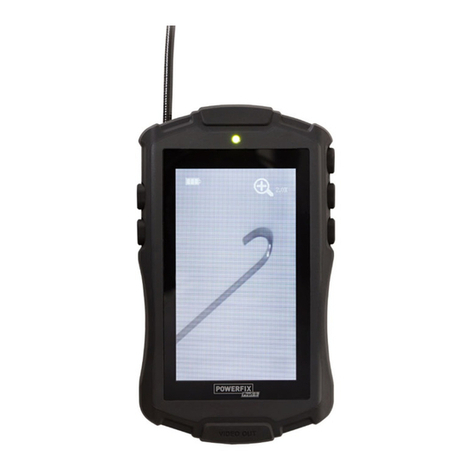
Powerfix Profi
Powerfix Profi PEKK 4.3 A1 Operating instructions and safety instructions
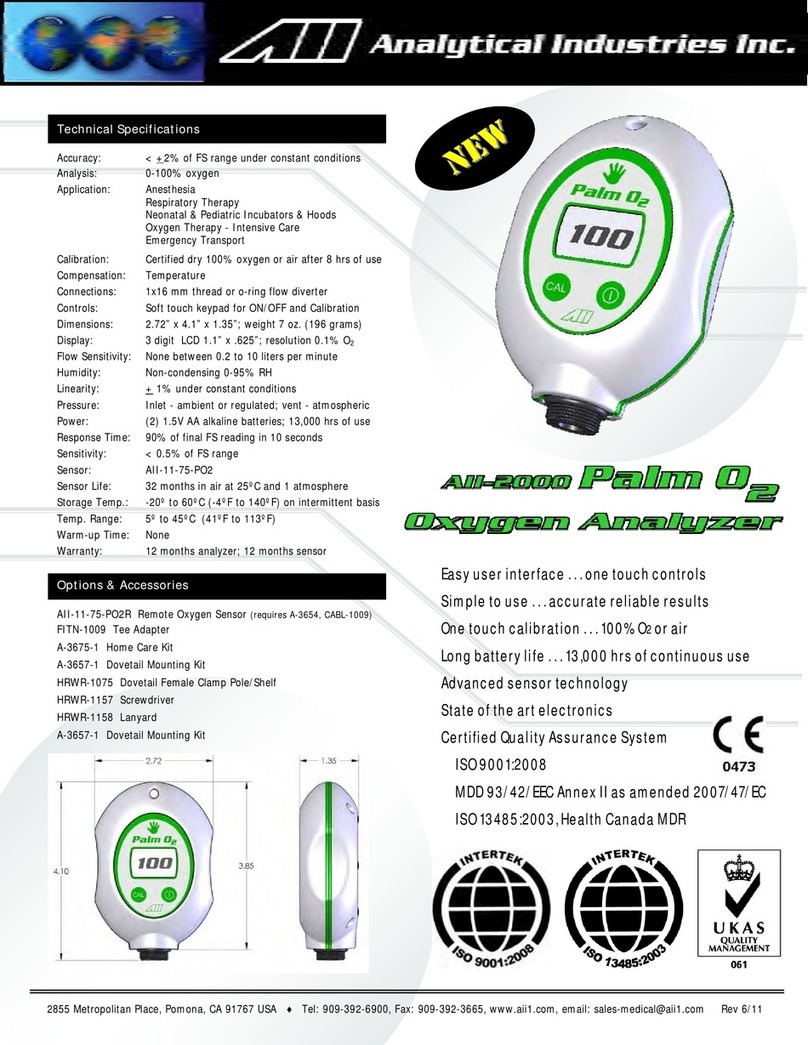
Analytical Industries
Analytical Industries AII-2000 Palm O2 Instructions for use
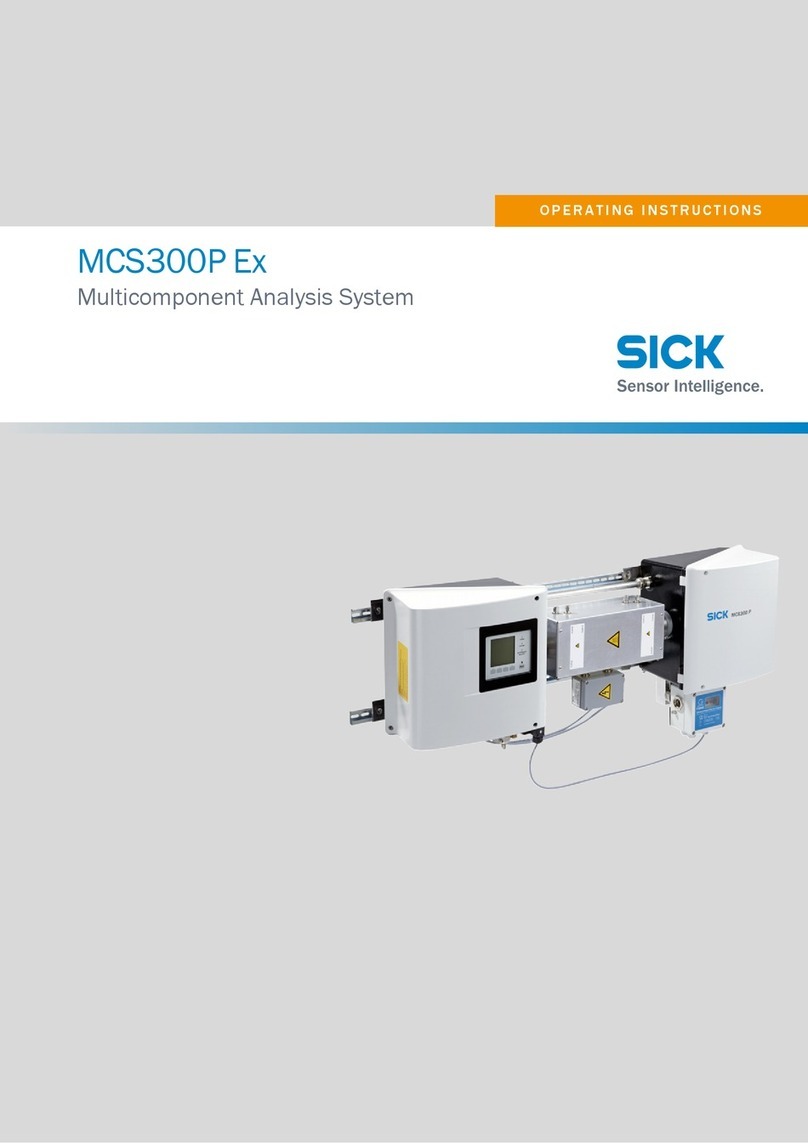
SICK
SICK MCS300P operating instructions
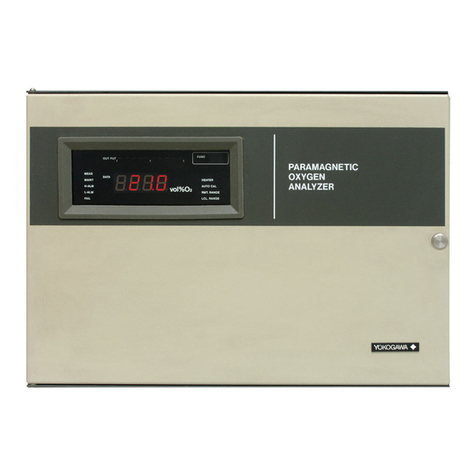
YOKOGAWA
YOKOGAWA MG8G user manual
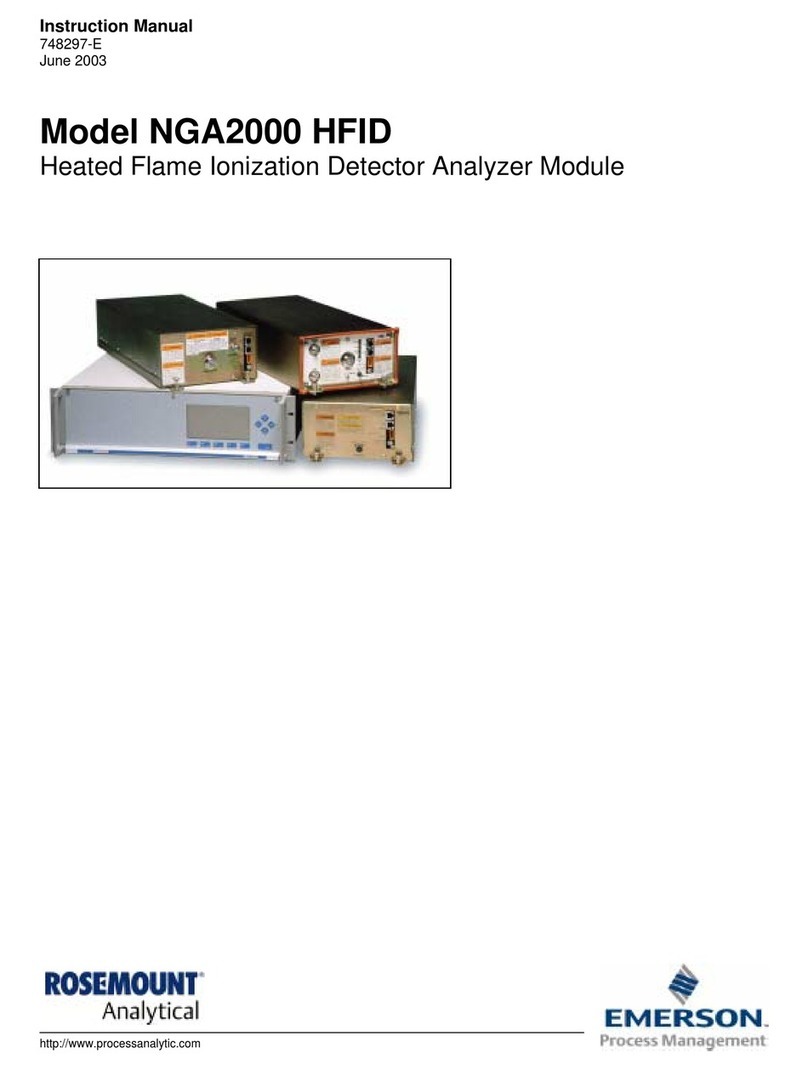
Emerson
Emerson ROSEMOUNT NGA2000 HFID instruction manual
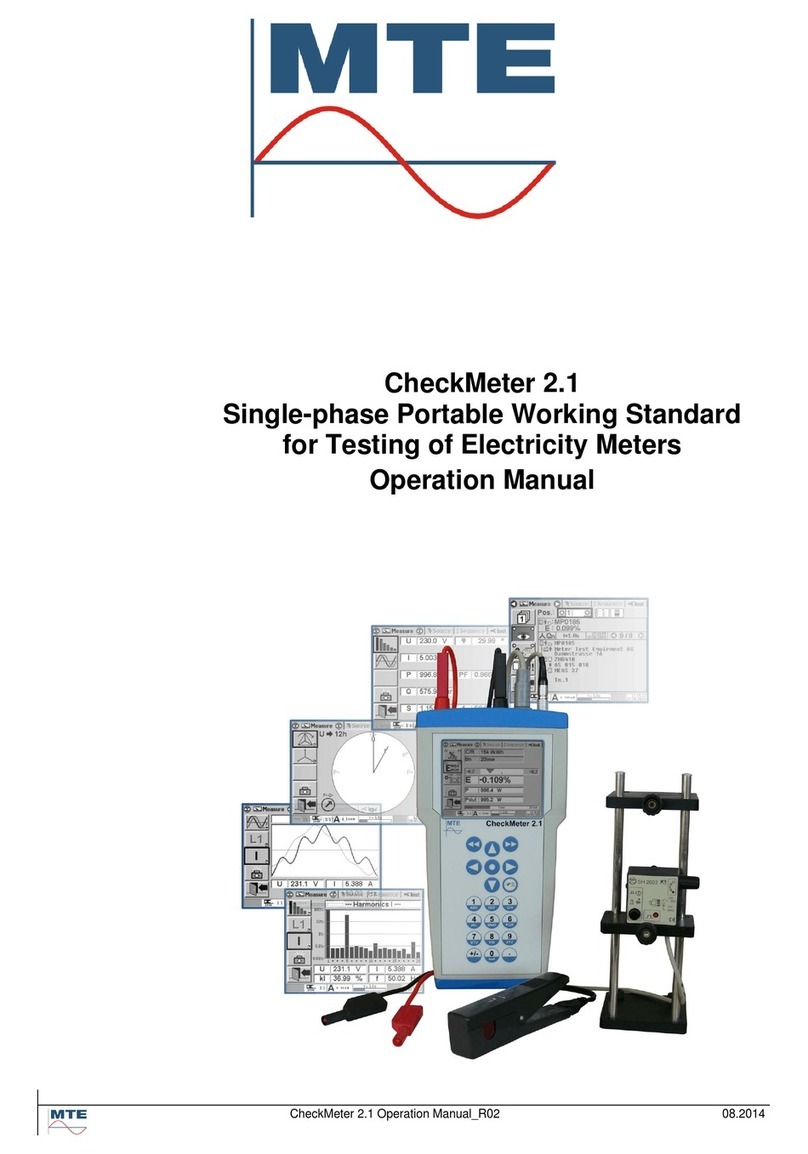
MTE
MTE CheckMeter 2.1 Operation manual
